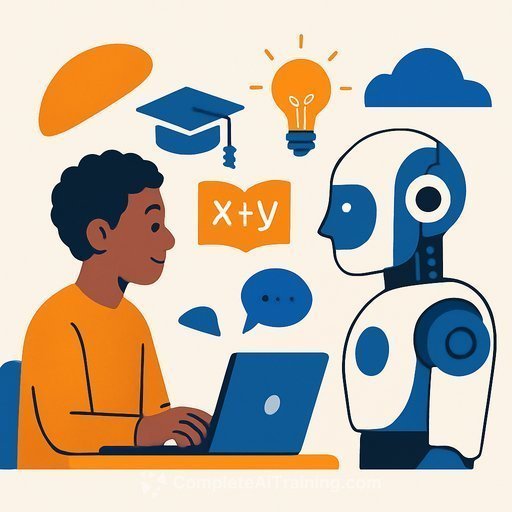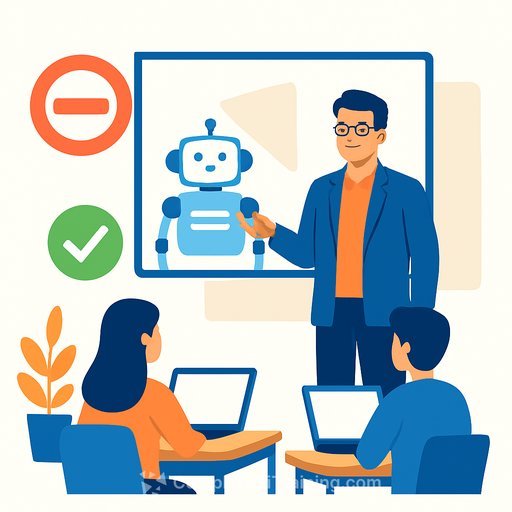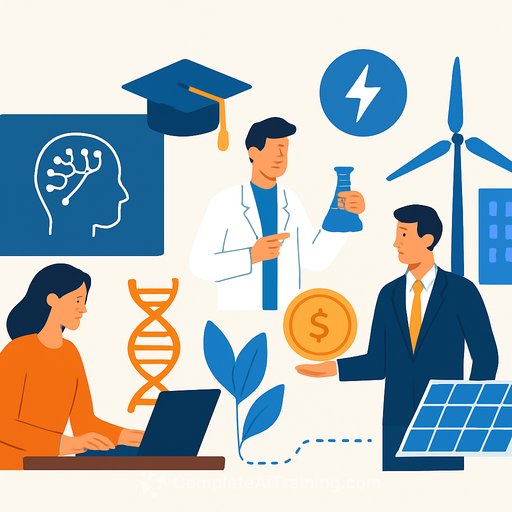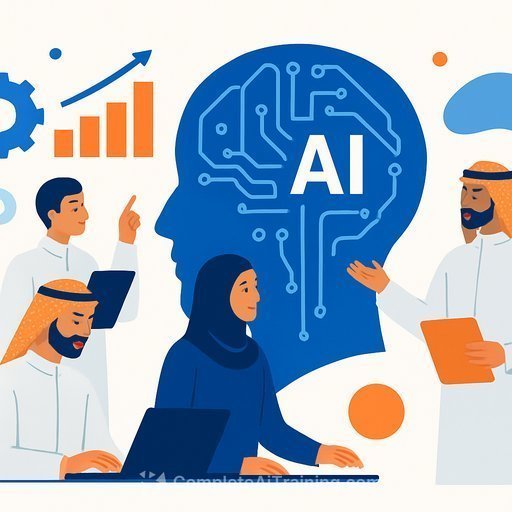Will AI Change Teaching Jobs in the Future? Read This Before Your District Says Yes
Big tech is moving fast to get generative AI into public schools. It's not just about short-term revenue. It's about normalizing tools that fit corporate goals while schools are underfunded, teachers are overwhelmed, and leaders are desperate for quick fixes.
Adoption is already underway: major vendors are rolling out "education" versions of their models, districts are piloting classroom tools, and unions are being courted with large training initiatives. The pitch is personalization, efficiency, and "future-ready" skills. The risk is a quiet downgrade of thinking, equity, and trust in learning.
The Push Is Real
OpenAI, Google, and Microsoft are marketing classroom versions of ChatGPT, Gemini, and Copilot. Code.org's TeachAI, major grants to teacher training programs, and a 2025 White House pledge by 60+ orgs are accelerating rollouts.
States are signing MOUs with chipmakers to seed AI from early grades. Large districts are piloting story and image tools for students. Partnerships with AFT and NEA aim to train hundreds of thousands of educators to adopt AI in instruction.
Why This Should Worry Educators
- Critical thinking atrophy: Heavy AI use shifts effort from analyzing to accepting and stitching together AI outputs.
- Bias amplification: Systems trained on scraped internet data reproduce racial and gender bias in text and images.
- Unreliable answers and political steering: Models hallucinate, and owners can tune outputs to align with ideological or commercial aims.
Evidence You Can't Ignore
Survey and interview data across hundreds of participants show a negative link between frequent AI use and critical thinking, driven by cognitive offloading. Younger users were most affected and most reliant on AI.
Research on knowledge workers found that while GenAI boosts speed, it reduces deep engagement and shifts effort from problem-solving to integrating AI responses. Confidence in the tool leads to less scrutiny.
Medical studies report a drop in clinician skill after relying on AI assistance for just a few months. If professionals backslide that quickly, we should expect similar risks for developing minds.
Bias Is Baked In
Large models are trained on massive, messy datasets. That means stereotypes and discriminatory patterns flow into outputs, even when guardrails try to blunt them. Real resume tests show preferences tied to names linked with race and gender. Image generators default to stereotypes of people, places, and professions.
Put simply: classroom use will normalize biased content unless every step is audited, verified, and re-taught by a human. That's not a time saver-it's extra work with legal and ethical risk.
Hallucinations and Steering Are a Feature, Not a Bug
Models predict plausible text or images; they don't know truth. They will confidently make things up-citations, facts, quotes, even book lists. Newer models don't eliminate this; in some cases, they produce wrong answers faster and with more polish.
There's another risk: owners can shape responses for political or commercial goals. We've already seen systems assert contested claims because they were "instructed" to do so, then quietly reverse course after public backlash. That is not a stable foundation for instruction.
What Schools and Colleges Should Do Now
- Set clear boundaries: Prohibit AI ghostwriting and AI grading. Require student attribution for any AI assistance. Allow limited, low-stakes uses (e.g., ideation for teachers) with verification steps.
- Re-center critical thinking: Require process artifacts (notes, outlines, drafts), in-class writing, and oral defenses. Grade reasoning and iteration, not just final outputs.
- Redesign assessment: Use more performance tasks, portfolios, and authentic prompts. Rotate analog checkpoints to reduce dependency and plagiarism risk.
- Procurement checklist: Demand no training on student data, full audit logs, bias and safety testing, age gating, local data retention controls, and a human-in-the-loop requirement. Build an exit plan before you sign.
- Professional learning: Prioritize independent AI literacy over vendor-led hype. Start with concise primers and book clubs led by teachers. A curated list of AI books can help you cut through marketing claims: AI books for educators.
- Family and community: Publish a plain-language AI policy. Provide opt-out choices. Explain when and why AI is not used.
- Union and governance: Address workload, surveillance, academic freedom, and evaluation in MOUs. Don't let "pilot" become permanent without review.
- Infrastructure and environment: Scrutinize data center proposals tied to AI expansions for water, energy, and community impact. Instructional needs should come before vendor roadmaps.
A Sane AI Policy Framework
- Student learning first: No AI feature that reduces time spent on reading, reasoning, writing, and discourse.
- Human accountability: Staff-not systems-are responsible for judgments that affect grades, discipline, and services.
- Equity by design: Test for disparate impacts before deployment. Stop or redesign if bias persists.
- Proof over promises: Require independent evidence of learning gains, not vendor case studies.
- Privacy and safety: Default to data minimization. No student identifiers in model training. Transparent incident response.
If You Move Forward, Move Slowly
Use small, time-boxed pilots with clear success criteria and kill switches. Compare outcomes to non-AI alternatives. Share findings publicly. If AI can't beat a well-run, human-centered classroom, don't ship it.
AI may help with narrow, low-stakes tasks under strict oversight. But handing core thinking work to a stochastic system will cost students agency and skill. Slow down, test hard, and keep humans at the center of learning.
Your membership also unlocks:






